Legendary Beauty Across Rae’s Creek
“Rarely do the commentators and the golf writers remember to mention the source of that horticultural magnificence for which the Augusta National is rightly celebrated. When founders of the golf club, Bobby Jones and Cliff Roberts, opened their new course to play in 1933, they had an existing property already landscaped with rare and beautiful plants. The property had formerly been the site of Louis and Prosper Berckmans’ Fruitland Nursery.” —William A. Balk, Jr.
Epicurus’ Porch
By William A. Balk, Jr.
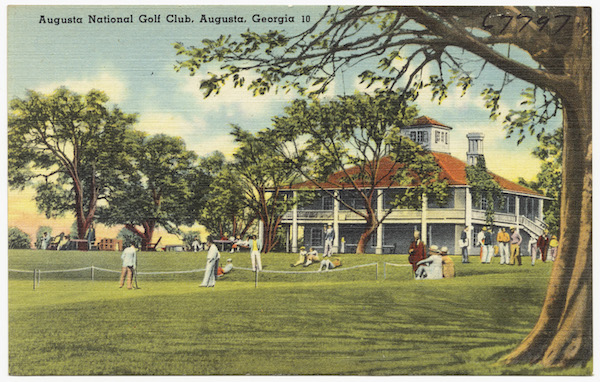
ELKO South Carolina—(Weekly Hubris)—September 2018—The Augusta National golf course is every bit as beautiful as commentators describe it at Masters Tournament time. The azaleas and dogwoods each spring are more memorable—to this observer, anyway—than the golf competition, and perhaps more stories have been spun about their perfectly timed display of spring glory than about the tournament, itself.
One persistent tale—apocryphal, according to official spokesmen from the Masters—concerns the remarkable timing of the flowering shrubbery. In order to assure that the explosion of blooms doesn’t happen a week or two early, it is said that the groundskeepers have a buried system of pipes running through the flowerbeds of the enormous golf course. If an early warm spell threatens to rush the bloom prematurely, the team pumps cold water through the pipes to fool the azaleas and the dogwoods into delaying their flowers.
I hasten to confirm the officials’ denial: many years, we who live in the vicinity of Augusta have watched with anxiety as an early heat wave forces spring to arrive long before the Masters. It is always a point of concern but, obviously, of far more concern to those producing the Masters for worldwide viewing: those years, the Masters must make do with strategically placed potted shrubs to obscure the fact that every last azalea on the grounds has already blown its chance to shine for the cameras. Remember that the next time you peer through a screen of azaleas to watch a fairway shot with nary a bloom beneath the pines. So much for cooling pipes under the ground.
Rarely do the commentators and the golf writers remember to mention the source of that horticultural magnificence for which the Augusta National is rightly celebrated. When founders of the golf club, Bobby Jones and Cliff Roberts, opened their new course to play in 1933, they had an existing property already landscaped with rare and beautiful plants. The property had formerly been the site of Louis and Prosper Berckmans’ Fruitland Nursery, reputedly the first large commercial plant nursery in the South, founded in 1858, although that claim might be disputed by the Pomaria Nursery, founded by the Summers brothers in Newberry, South Carolina, in 1840.
The Berckmans home was situated at the highest point on the several-hundred-acre property, and the nursery provided the trees to form the magnificent allée of Magnolia grandiflora along the entry drive from Washington Road to the manor house site.
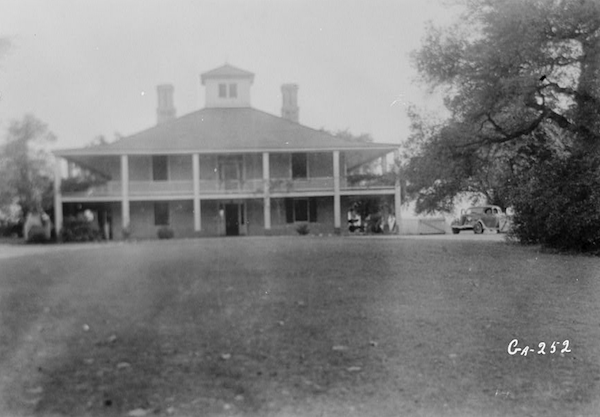
At about the same time as the Berckmanses were establishing their nursery and planting their grand alléé of magnolias, Governor James Henry Hammond was building his showplace plantation, Redclifffe, across the Savannah River in Beech Island, South Carolina. He, too, wanted an alléé of magnolias, so he ordered dozens from Fruitland Nurseries to plant an avenue as grand as the Berckmanses’ own, and as dramatic as any processional allée of the seats of European nobility.
The magnolias at Redcliffe were matched by other acquisitions Hammond made from the Berckmanses: Spanish cork oak trees; crepe myrtles; blue Atlas cedars. Fruitland Nursery offered dozens of varieties of peach trees, apples, and pears. Grapes—the European wine grapes, Vitis vinifera—were tried repeatedly, but unlike the native grapes, failed repeatedly in the Southern soils and climate.
The nursery in Augusta continued to expand its offerings and to increase its plantings over much of the acreage above Rae’s Creek. The Berckmanses constantly introduced into American commerce new ornamental garden plants and developed and improved fruit and nut varieties. Their influence is still powerful in horticultural offerings today.
The very best ornamental yellow jessamine, Gelsemium sempervirens, the state flower of South Carolina and one of the loveliest—and earliest—climbing flowering vines in the garden, is the one called Pride of Augusta. It’s a superb double-flowered form with rich coloring and dense growth habit; and it’s a Fruitland Nursery introduction.
Perhaps the most ubiquitous ornamental shrub throughout the south is the azalea, and the type which is most closely associated with southern gardens is the Hybrid Belgian Indica Azalea, Rhododendron x, also called the Southern Indica hybrid azalea. Perhaps no one has done more to spread the planting of the Belgian Indicas than these Belgian immigrant nurserymen in Augusta; and perhaps no introduction of theirs has had such impact, largely because of the spectacular use of these particular azaleas during the Masters Tournament.
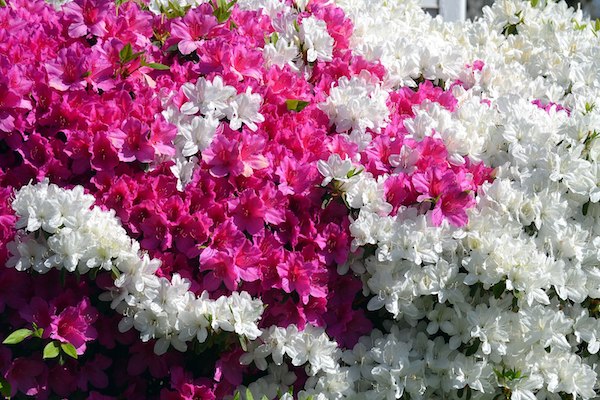
There are numerous varieties of garden plants still in the trade, still offered in catalogs, which were first offered in the Fruitland catalog: the outlandishly fragrant Tea Olive, Osmanthus x fortunei “Fruitlandii”; the Fruitland silverberry, Eleagnus pungens “Fruitlandii”; and any number of other varieties still proudly holding on to the hundred-year-old moniker, “Fruitlandii.”
That dramatic annual floral display which the Augusta National puts on every spring on the site of the Berckmans family’s Fruitland Nursery ought at least once in one’s lifetime be witnessed in person, and not just on a television screen, no matter how big. Not everyone, however, has access to that revered course during azalea season.
There is, I am pleased to report, another way to experience much of the spring show and, coincidentally, there is a personal connection.
The original expanse of the Fruitland Nursery reached from the hilltop with the manor house—now the Clubhouse—all the way southward and downhill to Rae’s Creek. The golf course extends even farther along Rae’s Creek and abuts the similarly beautiful Augusta Country Club golf course on the opposite side of Rae’s Creek.
A third property joins these handsome competitors. Westover Memorial Park, more than a century old, is one of the most beautifully landscaped cemeteries in the country. When the dogwoods and azaleas are in full bloom at the Augusta National and at the Augusta Country Club, they are also in full bloom at Westover. There are the same rolling hills, sweeping vistas of red and pink, purple, and white each spring . . . and the visitors are much quieter than at the two golf courses. The park’s 83 acres along Berckmans Road are filled with lovely old trees and handsome monuments; there are thousands of azaleas and dogwoods and other plantings, all lovingly maintained by a devoted staff. At the center of the park, where the hillside drops dramatically to a hidden spring, an especially fine woodland garden is kept, given to the community by the Fuqua family.
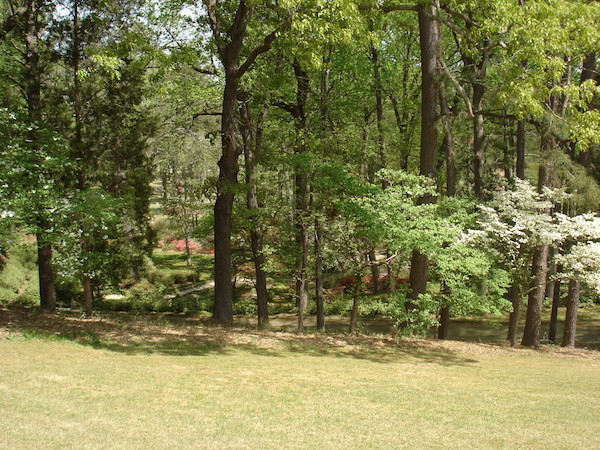
At the top of that hill, overlooking that spectacular woodland garden, is the striking marble columbarium. And next to the columbarium lie my paternal family in a plain plot of grass, low memorial stones, and several trees dripping with moss. I don’t think it has been planned this way, but our family burial services here seem often to happen at the peak of bloom, and there is special comfort in having such a glorious vista before one at such a moment of reflection and grief.
In a peculiar twist, I learned in the last few years that this burial site—chosen a century ago by my father’s side of the family—had been the precise location of the plantation house of my mother’s great grandfather. This connection between the two sides of the family would have been unknown to any of the residents of that cemetery plot; indeed, it was a surprise to all of us still walking around, although we should have been able to figure it out, had we paid more attention to family lore.
At the same time that the Berckmans family was establishing their nursery across Rae’s Creek, my maternal antecedents were establishing their own household on this hillside in view of the new nursery. And now, today, the site of each enterprise is enriched with the horticultural heritage of the Berckmans family.
Eventually, I have decided, everything is connected.
![]() Image Credits: Image 1, Tony Alter from Newport News/CC BY 2.0/Wikimedia Commons; Image 2, public domain, Historic American Building Survey; Image 3, Boston Public Library/CC By 2.0/Wikimedia Commons.
Image Credits: Image 1, Tony Alter from Newport News/CC BY 2.0/Wikimedia Commons; Image 2, public domain, Historic American Building Survey; Image 3, Boston Public Library/CC By 2.0/Wikimedia Commons.
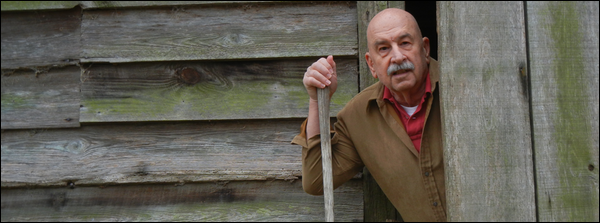
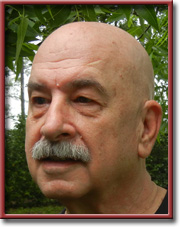
4 Comments
Lolita
Once again, Will, you “nailed it.” …you and David Lauderdale certainly have a way with words..a talent I have lost, as you can see from my use of these clichés!!! But I still have my Southern manners to say “thank you” for sharing your discoveries!!! Bless your heart!!!
Will
Thank you, Lolita! It’s always inordinately encouraging to know you’ve read – and like! – something I’ve written. You needn’t ever worry about having lost your real talent for writing – it’s always been there, always enriched with your humanity and understanding, and I have no doubt at all that it will remain one of your permanent character traits – people will always know you for many gifts – among them, your perceptive writing – sort of like a tattoo! It won’t go away!
diana
Dear Will, You evoke flowers, shrubs and trees with such love and poetry that I found myself missing my native land — that doesn’t happen often these days! Only connect was Forster’s advice and so you do and you connect with your readers too. In so many ways.
Will
Thank you, Diana….and thank you for the reminder of the Forster “connection,” so to speak; I use the original phrase occasionally, but forgot its multi-layered significance in Howard’s End. When I write I tend to avoid the specific phrase and use some invented equivalent, precisely because I neglected to dig up where I learned the phrase from. I dislike using rich borrowed words without keeping in mind their original use – and creating it when appropriate. (The committee I head for the Board at South Carolina Humanities is developing a ‘brand’ phrase, a catch phrase, for marketing purposes; one of my favored suggestions was “Only connect.” Not quite Nike’s “Just do it!” I suppose, but I am attached to it.)